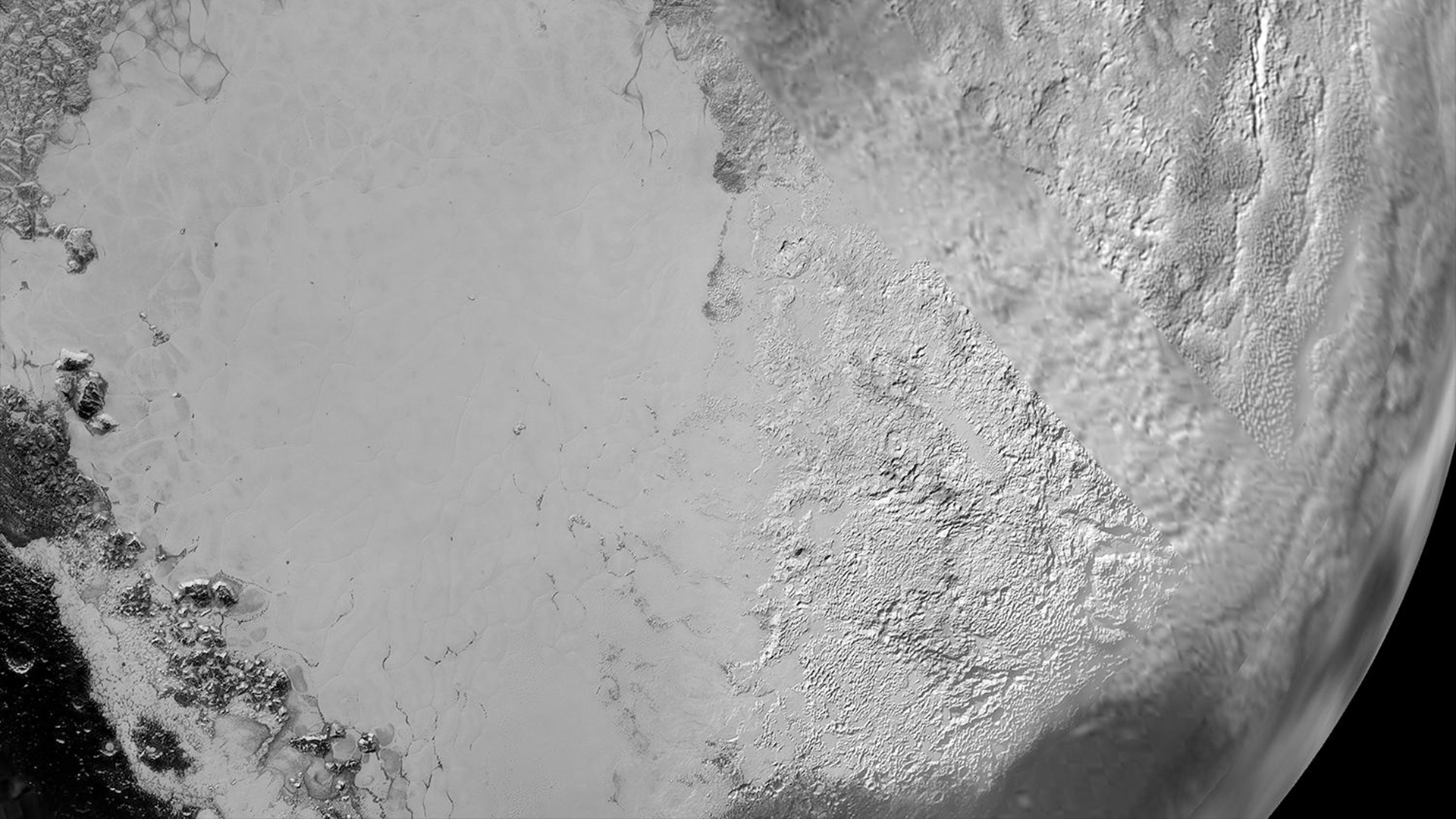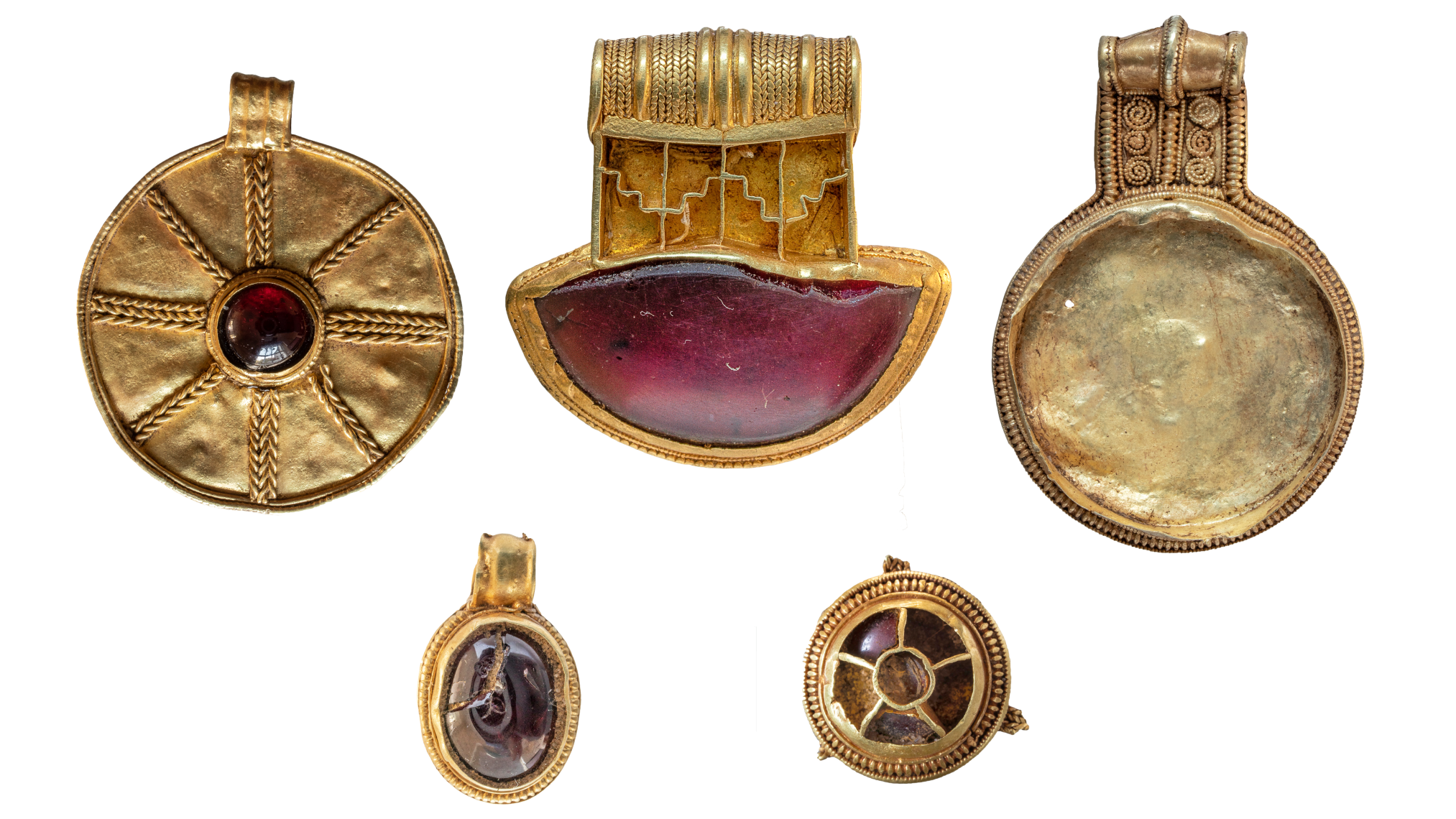Pluto may have an ice-spewing 'supervolcano' the size of Yellowstone, New Horizons data reveals
Kiladze Caldera, formerly called Kiladze crater, may be a supervolcano that erupted fairly recently, spewing ice across the surface of Pluto.

Demoted planet Pluto may have an ice volcano on its surface the size of Yellowstone, scientists recently discovered.
The newly discovered volcano, Kiladze Caldera, was originally pegged as a crater via images captured by NASA's New Horizons mission. After taking a second look at data from New Horizons, scientists now think Kiladze Caldera has erupted multiple times over its history, spewing around "a thousand kilometers of cryo-lava" — or enough to almost cover the city of Los Angeles — in each of its largest eruptions, the researchers wrote in a study submitted to the journal Icarus and published on the preprint database arXiv.
Cryovolcanoes, also known as ice volcanoes, are simply volcanoes that erupt with ice, water, and various gasses instead of molten rock. They've been identified in a few places in our solar system, including the dwarf planet Ceres located in the main asteroid belt. They're even the culprit behind Enceladus's famous plumes, seen by the spacecraft Cassini.
Plus, "there are at least two other cryovolcanic structures on Pluto," lead author and NASA planetary scientist Dale Cruikshank told Newsweek. These other icy volcanoes are known as Wright Mons and Piccard Mons.
Researchers had plenty of evidence to suspect Kiladze was more than a common impact crater. Not only did it look a bit odd for a crater, it was also surrounded by water ice — which is usually hidden below methane snows and gunk from Pluto's natural equivalent of smog — and nestled between faults and other tectonic features.
The clincher came when the team found evidence of ammonia mixed in with the water ice around Kiladze. Ammonia lowers the freezing point of water, possibly allowing water to flow as liquid cryo-lava. Interestingly, ammonia is also an important molecule for the chemistry that makes amino acids, and eventually life.
The fact that Kiladze is surrounded by water ice also suggests that it's quite young, or at least erupted fairly recently (in geologic timescales, anyways). Over time, the water ice is covered up by other materials, so an uncovered area must be younger. "We estimate that the age of Kiladze and surroundings (since the last eruption) is only a few million years," said Cruikshank.
Get the world’s most fascinating discoveries delivered straight to your inbox.
The big outstanding question is: where did the water cryo-lava come from? Pluto "once had an internal ocean that was global in scale," explained Cruikshank, harkening back to a distant time when Pluto was still warm from the collisions that led to its birth. Leftover heat in the dwarf planet's core could be keeping that ocean liquid now, combined with freeze-resistant chemicals like ammonia, and occasionally bursting out through cryovolcanoes like Kiladze. Alternatively, the subsurface ocean may have frozen over long ago, but small pockets of water remain feeding structures like Kiladze.
"This is a mystery for the next generation of planetary scientists to solve," Cruikshank told the space news site Universe Today in an email.

Briley Lewis (she/her) is a freelance science writer and Ph.D. Candidate/NSF Fellow at the University of California, Los Angeles studying Astronomy & Astrophysics. Follow her on Twitter @briles_34 or visit her website www.briley-lewis.com.



